What is a Mary Sue Character?
A Mary Sue is a character who seems unrealistically perfect; an idealized female character without demonstrable flaws, used as a kind of wish fulfilment for the author and audience.
The trope originated from Paula Smith, who coined it in “A Trekkie’s Tale”, a parody Star-Trek fan fiction. It was intended to mock authors whose characters were clearly based on wish fulfilment, self-inserts and idealized versions of themselves.
In fan fiction, the origins of the term Mary Sue are simple. They describe a character that has been added to an already existing fictional universe and:
- Gains power/ becomes overpowered without any struggle or journey of earning it.
- Gets attention from the original established characters (including those who it is uncharacteristic of eg. if they are anti-social, untrusting).
- Resolves the entire conflict almost single-handedly, removing any obstacles.
Despite beginning in fan fiction, Mary Sue characters are visible in films and TV series of many kinds.
What are the Main Characteristics of a Mary Sue Character?
As the term has grown in popularity, it has subsequently entered the mainstream. With this, however, the definition has arguably become slightly skewed. It can be challenging to pinpoint exact characteristics that everybody agrees fit the trope. However, the main ones identified in fan fiction are far more specific. And these can help you get a grasp on the kinds of traits to look out for.
Mary Sues are:
- One-dimensional, flat and lacking personality or nuance. They have no distinguishable identity that makes up who they are or what they want.
- Exceptionally talented. They can seemingly do everything (furthermore, these skills tend to conveniently pop up without explanation) and rarely struggle. They have an answer for every problem and everybody around them is unable to match their skill.
- Thrown to the forefront of the narrative; the conflict revolves around them and is solved by them.
- No weaknesses or realistic character flaws and no negative consequences for their actions.
- Incredibly beautiful and desirable, with stereotypical attractive traits.
- An unusual or dramatically tragic backstory.
- Immediately loved, admired and idealized by the other characters, who are instantly captured by her wit, charm, beauty and bravery.
Examples of the Mary Sue
Bella Swan (Twilight)
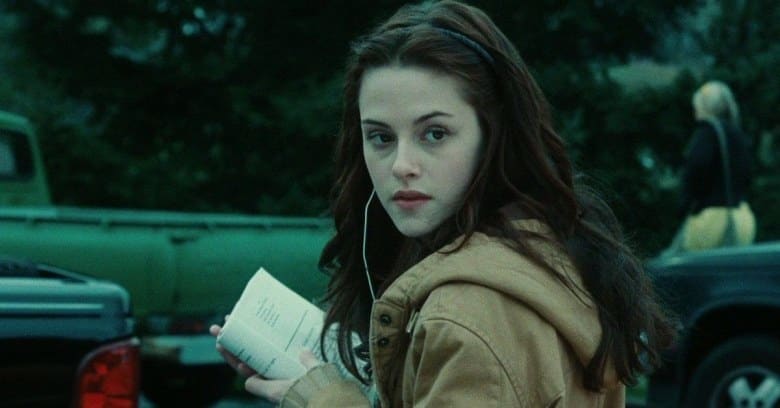
Undoubtedly one of the most heavily criticised female characters in recent times, Bella is often hailed as the archetype of a Mary Sue character. She plays straight into the claims of weak characterisation, with her lack of personality, depth and development. All this signals not only a poorly written character but a Mary Sue.
- Almost every person she meets adores her. Bella’s love interest vampire boyfriend, Edward Cullen, finds her completely irresistible – quite literally.
- The only ‘non-desirable’ traits Bella has are her social awkwardness and clumsiness. This becomes reduced to a minor and endearing quirk, supposed to appeal to the audience.
Moreover, when Bella transforms into a vampire, she is remarkably fast at getting the hang of her new life. She gains control over her bloodlust within a matter of days.
Bella’s entirely ordinary personality allows an audience to project themselves onto her. And the plot has completely extraordinary things to happen to her, which grants wish-fulfilment.
Anastasia Steele (Fifty Shades of Grey)
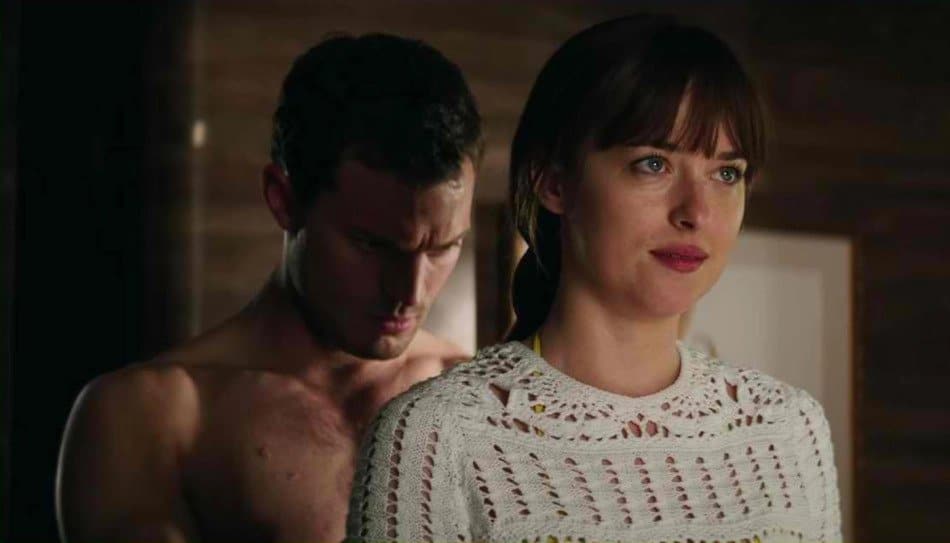
Originating as Twilight fan fiction, Fifty Shades of Grey protagonist Anastasia Steele is another notorious example of a Mary Sue.
She is an indistinct female character with a bland background. Moreover, Anastasia becomes the obsession of an attractive, powerful and rich man, Christian Grey, who has never had his heart captured by anyone else.
The easiest way to measure whether Fifty Shades warrants the Mary Sue claims is that if you take the love interest, Christian, away, the story would fall apart. It’s near impossible to mention Anastasia as an individual entity, especially since Christian controls everything she does.
Debatable Mary Sues
Over time, the definition of a Mary Sue character has made its way into mainstream media criticism. And because of this, there has been a trend of branding female characters Mary Sues, even if they are seemingly competent, complex and capable women.
In these instances, Mary Sue claims often undermine that powerful women can and are headlining such films. And this narrative has caused the term and its effectiveness to become watered down. Significantly, it has the danger of damaging our outlook on realistic representations of women.
So who are the debatable Mary Sues? Who are the characters that perhaps have some Mary Sue characteristics but are mostly wrongly ascribed the term?
Carol Danvers/ Captain Marvel (Marvel)
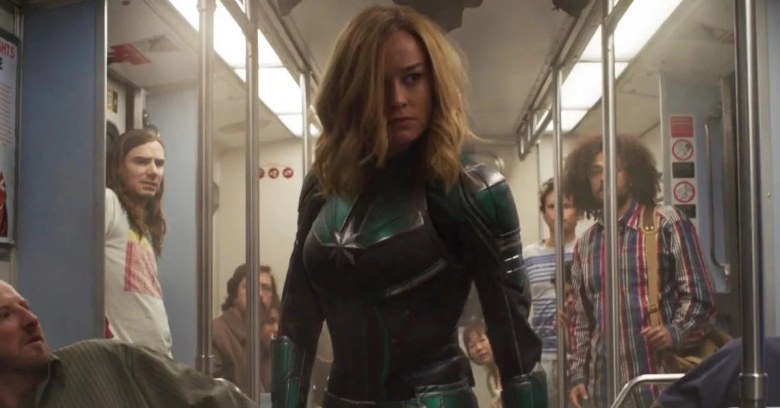
She is smart, skilled and confident. But compare her reception with the beloved Tony Stark. He is also incredibly intelligent, good-looking, obscenely rich and leans far more into the arrogant side of confident. So the branding of Captain Marvel as a Mary Sue doesn’t quite hold up when you compare her to her male counterparts. Are they also seen as Mary Sues?
She’s a character often branded too cocky, too powerful and therefore unlikable or unbelievable. Is she a Mary Sue? Or is she a powerful, albeit relatively familiar character who wouldn’t be so widely written off if she were male? Captain Marvel’s characterisation is perhaps an example of how the Mary Sue term can be wielded against characters that may strike as unoriginal but little more than that.
Rey (Star Wars)

This is perhaps the most controversial and is subject to many years of online debate. She’s argued to be a Mary Sue character primarily because of her strength, skill and power.
On one hand, one can see how she might slip into this territory from time to time. She’s never a particularly charismatic character and she can seem somewhat of a vessel for the audience’s attention and affection at points. Even so, Rey’s journey generally follows a fairly similar trajectory to Luke Skywalker’s. If she is a Sue, she is no more one than he is.
Arya Stark (Game of Thrones)
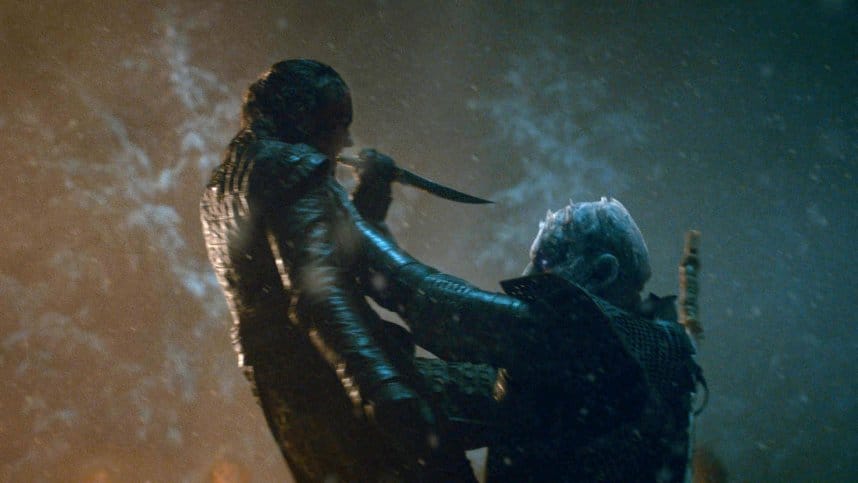
In this case, claims flooded the internet during the show’s final season. It followed Arya defeating the notorious villain, the Night King, in a battle against the White Walkers.
With her triumph branded as ‘unrealistic,’ these criticisms disregarded that Arya’s character evolved over eight seasons. She earned and proved her capabilities on more than one occasion. She’s not a Mary Sue because she has a rounded and idiosyncratic personality and isn’t necessarily a projection of an idealized woman or character.
However, where the criticism perhaps does find some ground is in the way she saves the day quite so easily. Is this perhaps though an issue with plotting more than it is characterisation?
What a Mary Sue is and isn’t
Sometimes, characters do fall short and warrant criticism. Obviously, everyone has their own interpretations. Regardless, we shouldn’t overlook that the most hated ‘Mary Sues’ are often characters that are held up to different standards than their male counterparts.
So…
- A Mary Sue character is not just a fictional female character with weakness in characterisation or plotting.
Instead…
- A Mary Sue is a female character whose functionality outweighs their own individuality.
Additionally, non-Mary Sues are…
- Dynamic and complicated.
- Active in the story, impacted by internal and external obstacles.
- Able to possess strengths (including a gift or power) whilst being flawed and interesting.
Ultimately, a Mary Sue is defined by weak characterisation overall. However, flaws in characterisation aren’t what makes a Mary Sue alone. And sometimes female characters can be held to a standard that is difficult to attain for any character.
Gary Stu
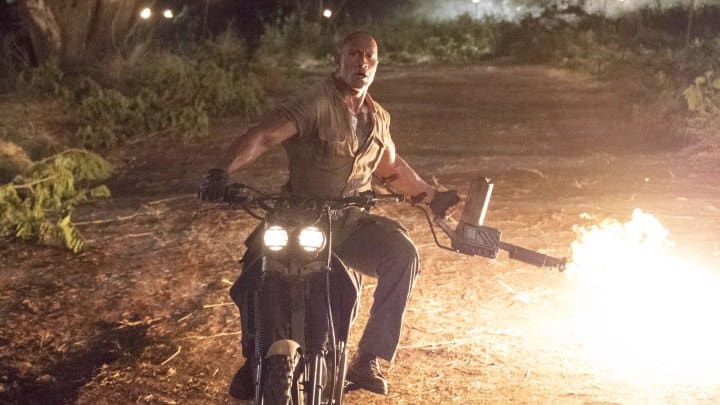
Allow Mary Sue’s lesser-known brother to be introduced, Gary Stu. Garys, sometimes referred to as Marty Stus, are the male equivalent of a Mary.
In general, they mostly dominate action stories (think James Bond or many a character Dwayne Johnson has portrayed). They fit similar criteria to a Sue; lacking in personality, having no flaws or struggles, being impossibly attractive and incredibly strong and powerful without sufficient justification or obstacles.
Male characters are less likely to be called out for this. However, you still need to watch out for them. Just because it might be easier to get away with, doesn’t mean it’s can act as a substitute for good writing.
Weak characters that serve the plot and nothing else will likely lead to these kinds of hollow, shallow cyphers. And the route to avoiding this is building two-dimensional and convincing characters. So how do you do this? Let’s take a look…
How Can You Avoid Creating a Mary Sue?
So what are the key tenets of avoiding a Mary Sue character?
1. Assign Purpose
Mary Sue characters usually either:
- Do everything, resolving the story of any conflict, but have no clear character arc beyond this.
- Or they are passive, making zero impact on the plot and letting it happen to them instead of driving it.
- Either way, they lack purpose and application.
Another issue could be that their purpose changes so often that the audience is unsure of their objective or character identity.
If your characters do not have a purpose and identity, or it’s too unclear, there will be no conflict. And if there is no conflict, there is no room for your characters to evolve. Therefore, there is no story.
Making character profiles can help solidify the character at hand.
- You can begin by noting down something as simple as their strengths, weaknesses and/or backstory.
- Then ask yourself how you can implement these characteristics in the story.
- How will they serve the plot?
- Which qualities will help them? Which will limit them?
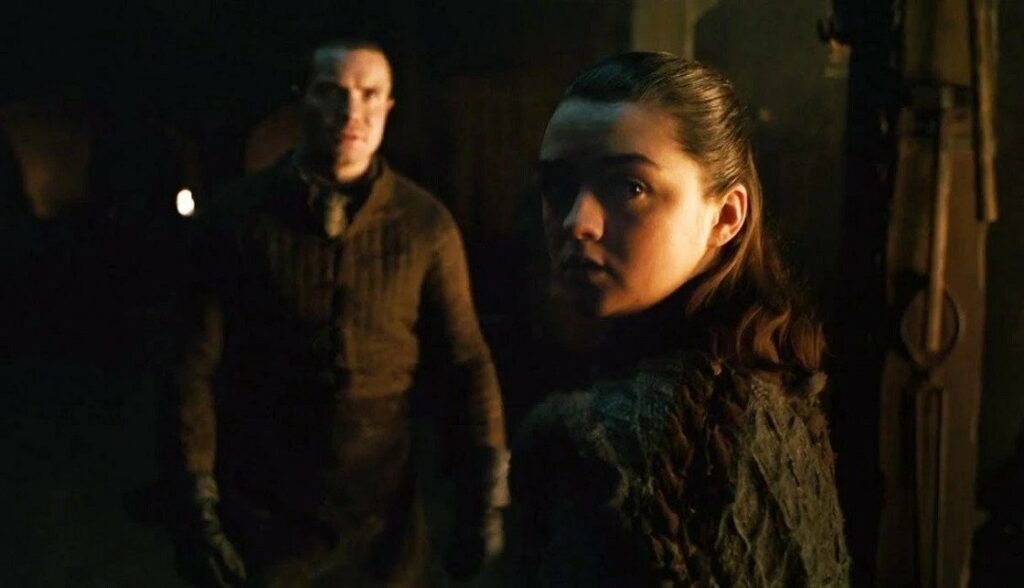
2. Create Flaws
If you ask any writer for tips on how to make a well-rounded character, they will answer, flaws.
But what does that actually mean?
- A flaw is an undesirable quality that a character has. It’s not just a negative character trait, however. It should directly impact their actions or abilities.
- For instance, this could be a bias, prejudice, vice, emotional volatility or phobia.
Stories are inherently about flawed characters. This means their imperfections need to be integrated to allow them to have any impact on the plot.
Moreover, flaws often represent a deep obstacle to character growth. They ensure your audience can identify with realistic characters, allowing for a greater attachment to the story as a whole.
We want to see characters overcome fundamental issues and obstacles and it’s rewarding to watch them grow. Particularly, there is more comfort in seeing a journey, knowing an obstacle can be overcome, than projecting oneself onto a flawless Sue.
The utter perfection of the Mary Sue might seem the easiest way to write a female character. However, whilst entirely flawless women in film and television give an impression on the surface of good representation, they actually operate on tokenism. Instead, it’s desirable to create complex and intriguing female characters with flaws and journeys that seek to overcome these flaws.
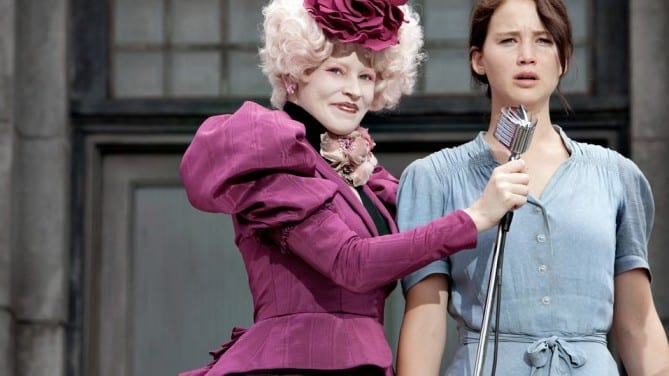
3. Discern Between Quirks and Character Development
Some Mary Sues might not be completely perfect. *Gasp*. But they won’t have actual flaws, only quirks.
Quirks – An aspect of a character’s behaviour that is considered a unique or peculiar habit.
These usually manifest as clumsiness, goofiness or awkwardness, something to make them ‘relatable’ to the wider general audience. There’s usually little depth beyond that.
Such quirks are not flaws. They’re arguably not even personality traits.
It can sometimes be effective to have quirks. They can serve as ways of distinguishing your characters and giving them discernible ticks and attributes. However, they only scratch the surface of the character and are NOT a substitute for actual character development.
4. Go Deeper and Use Flaws
There are flaws we recognize in ourselves and some that others perceive. This should be the same with your characters.
If you’re lacking in inspiration for flaws, take a look at the people around you or study certain characters and how they navigate. Use or embrace their flaws. Antiheroes are particularly interesting for this.
Building character profiles will help tease out flaws. Having a lot of information on your characters, forming their backstory or what’s important to them, is incredibly useful. The greater the insight into your characters, the less likely accidentally creating a Mary Sue will be, as they will have many dimensions to them.
An excellent example of a flawed character is Ozark‘s formidable Wendy Byrde. Her flaws add intricate complexities to who she is and push the story along, creating consequences and forced decisions with high stakes.
- Wendy knows how to get things done, but she’s ruthless and occasionally selfish. Generally, she prioritises protecting her family.
- Her drive and ambition has her strive for and seek more power. This causes problems, particularly with her family. In particular, it uproots Wendy’s past trauma, which causes internal struggles and unpredictability.
- Although Wendy isn’t well-liked by audiences, she is a great example of a deeply flawed character whose shortcomings and questionable choices are the main driving force for the plot. And for this, she’s all the more compelling as a character we want to watch.
5. Embrace Imperfections
One of the most popular female characters is The Hunger Games protagonist Katniss Everdeen. Let’s pick apart some of her qualities and examine how she largely manages to avoid being a Mary Sue character.
Katniss has many admirable traits.
- She’s protective of those she loves (eg. volunteering to participate in the games so that her sister doesn’t have to).
- She always tries to do the right thing and takes responsibility.
- Honesty is important to her.
- She is pragmatic.
- She’s a survivor.
However, she also has many flaws:
- She finds it difficult to trust and accept help.
- She’s stubborn; doesn’t always listen to advice and can be irrational and impulsive.
- She has a lot of trauma and often shuts down emotionally.
- She can come across as cold, can be harsh and is difficult to warm to initially.
We root for Katniss and her goals (first, to survive, later to reform corruption) despite her shortcomings – not just because she’s the main character, but because we’re given reason to care. Her flaws and mistakes only demonstrate her humanity and make her more relatable. Significantly, we don’t need to be told why she is so great, we see it for ourselves in action.
6. Reach For Authenticity
Imperfections are authentic. And authenticity draws us to characters.
Markedly one of the most successful demonstrations of how to make an entire audience actively, and quickly, fall in love with a character is Stranger Things’ Eddie Munson.
- If we look at Eddie from point of view of the story, he is hated by the majority of Hawkins; he’s a metal-head outcast, branded a freak by peers, and blamed for the death of Chrissy Cunningham.
- For most of the season, there’s an entire town manhunt out for him.
However, we see that Eddie’s friends all respect and look up to him, even idolize him. This is shown through his close friendship with one of the main characters, Dustin.
Despite this, Eddie’s imperfections are very present throughout. He’s a wimp, a bit of a coward, runs away from his problems, is on his third attempt at senior year and can be abrasive.
But eventually, Eddie gains courage, runs towards his problems, and sacrifices himself to help Dustin and his friends – the true tragic hero end, saving a town of people that despise him. This is proof that fear and bravery can coexist.
Eddie’s traits, qualities and eccentricities are what make him. Fans love him, not in spite of them, but because of them. But it’s not just that he has imperfections and flaws but that he must overcome them in order to succeed and drive the plot forward.
7. Assign Strengths and Goals
We’ve spent a lot of time talking about giving characters flaws to make them relatable and realistic. A huge part of balancing this comes with managing their strengths.
Characters need strengths in order to be active participants in the story. But positive attributes must be crafted to ensure the characters don’t breeze through every situation.
- If your character has some kind of ability or power, make sure there are limitations. Let them earn it and allow them to grow through the story.
- This is why, for instance, superhero origin stories (especially employing the zero-to-hero trope) are so popular. A character that grows is more realistic and interesting to watch, despite the potentially fantastical circumstances.
Your character also needs to have some form of goal and objective. This will give them a clear and distinct purpose in the story.
- What is their motivation?
- Does their personal goal conflict with the primary objective?
- What will they sacrifice?
- How will this force them to grow?
In simple terms: Who is your character, what do they want and why should we root for them to get it? We have to believe the characters have the ability and deserve to get what they desire. That way, we’ll be invested in both the stakes of their journey and the likelihood of it paying off.
8. Background Story
A character’s backstory is also vital in understanding who they are and how they will feature in the story.
- What’s your character’s background?
- What experiences – both good and bad – have they been through?
- How did they grow from these?
- How has it shaped them as individuals? Has it, for instance, impacted or directly caused their flaws?
A common aspect of Mary Sue characters is that they often have highly dramatic and tragic backstories. Of course, this doesn’t mean that your character can’t have a traumatic past. But be vigilant of the trope and how aware audiences are of it.
- Distinguish the backstory to ensure it’s not predictable or cliché.
- Don’t give the character a horrible past for no reason. Instead, make it mean something to who they are in the present.
- Furthermore, show how they emerged from this situation, adapted from it and their continuing struggles dealing with it.
- Connect this backstory with why they behave the way they do now. These are the kinds of aspects that can give your character additional dimensions.
- Don’t use the tragic backstory merely to elicit empathy. Instead, show how it actively shaped your character into the person they are.
A common example of this trope of a traumatic past would be making a character an orphan. Of course, a character being an orphan can be a realistic and engaging story arc. But in order to avoid the trope, you have to illustrate the three-dimensional view of how this backstory shapes your character, rather than just, for example, its propensity to make your character sad or moody.

9. Challenge Your Characters
Obstacles, obstacles, obstacles. There have to be problems in need of solving. Always.
Specifically, your characters need to be challenged. Let them stumble, let them struggle, let them fail. This will push essential character development.
- Write scene breakdowns. Go through each one and bullet point the obstacles.
- How do these impact your character?
- What options do the characters have to solve the problem?
- What actions will they take?
- And the most essential question; why?
If you’re struggling to define character traits/personality, throwing problems at them, especially ones they can’t easily answer, will help you see who your character really is.
In contrast, Mary Sue characters rarely, if ever, face any sort of conflict. If they do, they are able to navigate it with ease because of their wide range of skills.
Even if your character has special powers, they need to fail and overcome difficulties. For example, the Avengers failed the first time they tried to defeat Thanos in Avengers: Infinity War. We saw them face a defeat with huge repercussions. They had to cope with this and move on.
Whilst their second attempt in Avengers: Endgame was successful, it came at huge costs, the most impactful being the losses of Iron Man and Black Widow.
- Question your character’s choices. What led to the outcome of the obstacle?
- Why did they fail?
- Why did they navigate the obstacle in a certain way?
- How did this highlight their flaws?
- How will the conflict impact their future?
In storytelling, characters reveal who they are when they’re thrown into extraordinary situations that test their character. A Mary Sue is likely to breeze through any situation without much fanfare. Whereas, with a truly original character, we’ll understand what they have had to go through to overcome the challenge in front of them.

10. Don’t Allow Them To Be Loved By Everyone
Think about real life. You don’t automatically click with every person you meet. Clashes with people are unavoidable, disagreements are common.
Your characters should reflect this. This will also strengthen their relationships with the people who do love them. It’s often the case that defining characters by their contrasts and conflicts can highlight what they stand for, by highlighting what they stand against.
Moreover, these kinds of interactions build the fabric of relationships. They allow characters to learn, grow and change. A character can rarely exist in isolation, they must be shaped by those around them. And the stakes, conflicts and illuminations that engaging with other characters brings allow characters to be more than the sum of their parts.
Just because a character isn’t liked by all the characters around them doesn’t mean the audience won’t like them. In contrast, a character fighting to be liked is one more likely to endear themselves to an audience. We see their true complexity, just as a friend would, rather than dismissing them out of hand or being implored to see them as unrealistically perfect.
Dynamic Women – The Anti Mary Sues
Knowing what makes a non-Mary Sue is possibly one of the best ways to avoid creating them. As discussed, the term Mary Sue has been watered down by incorrect definitions and controversy that sometimes it’s easier to define characters that aren’t one.
So here are two dynamic female characters that really stand out:
Jo March (Little Women).
- She has a clearly established motivation, which drives her (to be a great writer).
- However, this puts her at odds with the norms of society at the time.
- Jo has a temper that is described as ‘volatile’. Her unconventional outlook is considered rebellious.
- The relationships with her family and close friend Laurie are put in jeopardy because of her goals and her personality.
Annalise Keating (How to Get Away With Murder).
- She is talented, charismatic and incredibly passionate about her work.
- She’s successful but often hides behind a mask. She is prone to self-sabotage, a lot of her past trauma resurfaces and causes her to relapse into vices such as alcoholism.
- This, in turn, puts a strain on her relationships, which aren’t easy for her to uphold.
These are just two examples of female characters whose complexity, in turn, drives the plot and makes it more interesting. They feel like real people and not just cyphers for the plot.
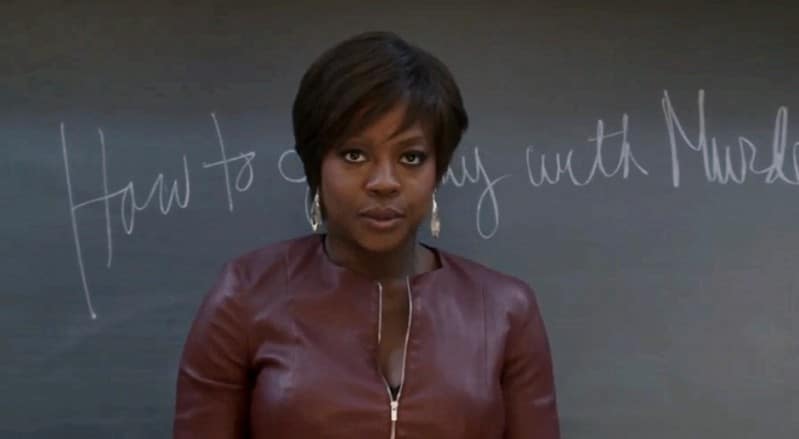
Ultimately, Mary Sues are weak characters because they often remind the audience they’re watching a constructed story, rather than one that seems to live and breathe. And so to avoid the Mary Sue trope in general, you must make your characters breathe.
In Summary
A Mary Sue is a character who seems unrealistically perfect; an idealized female character without demonstrable flaws, used as a kind of wish fulfilment for the author and audience.
A Mary Sue will have little to no flaws, overcome obstacles easily and/or be relatively passive within the plot and in relation to other characters.
To avoid writing a Mary Sue in screenwriting, your characters must be filled with flaws, have difficulties in overcoming obstacles, demonstrate realistic and believable strengths, have clear goals and make active decisions to achieve these goals.
– What did you think of this article? Share It, Like It, give it a rating, and let us know your thoughts in the comments box further down…
– Struggling with a script or book? Story analysis is what we do, all day, every day… check out our range of script coverage services for writers & filmmakers.
This article was written by Molly Hutchings and edited by IS Staff.
Get *ALL* our FREE Resources
Tackle the trickiest areas of screenwriting with our exclusive eBooks. Get all our FREE resources when you join 60,000 filmmakers on our mailing list!

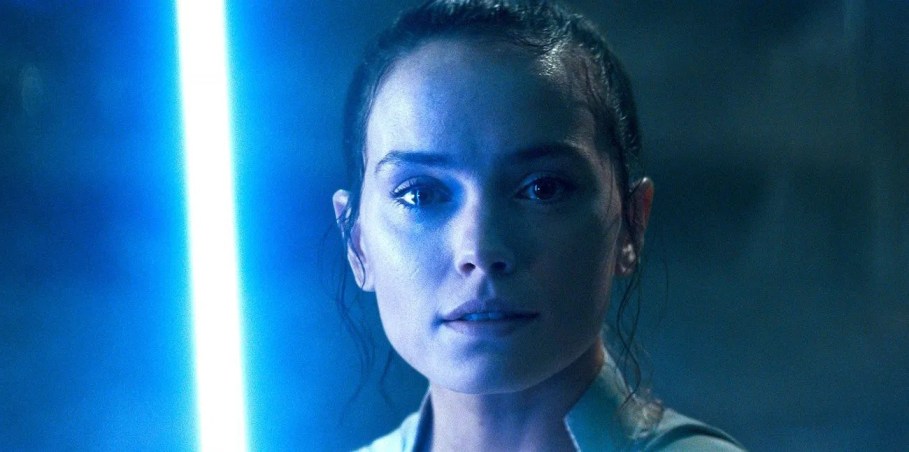
“Even so, Rey’s journey generally follows a fairly similar trajectory to Luke Skywalker’s. If she is a Sue, she is no more one than he is.”
You have no idea what you’re talking about. Rey is the quintessential Mary Sue to the point of redefining the term. Luke had to train. Nearly died multiple times. Lost a hand. Was too naive and that has consequences. Rey? Solves every problem on her immediate second try. Everyone likes her. Is naturally good. Overpowers a practiced Sith Warrior with a weapon she’s never trained or used before. Uses force persuasion, instantly, without any training. Can speak Droid and Wookie, without trading. Instant amazing pilot. Instant amazing sharpshooter. Somehow has a magical connection to a lightsaber that has nothing to do with her. Gets the millennium falcon…
That’s just the first movie.
adding in that Luke had in-movie tragedy – Luke is too late to save his family; he watches his mentor die, can do nothing. He responds to this by deciding to join Ben, not single-handedly save everyone. His father is terrible, this gets a substantive reveal, he gets most of a movie to grow from it. Rey is 90% power. Unfortunately for Daisy Ridley, Rey gets little time to develop as a character – good thing she doesn’t need it! Ms. Ridley did a very good job with very little to work with.
I’ve seen and read these types of characters, but didn’t have a name for them until now. I won’t comment on shows I haven’t seen. However, I have seen Twilight and I didn’t care for it at all. The reasons why are vast, but concentrating on character. Bella is one of those perfect teen girls from high school everyone, except me, liked or pretended to like for no reason other than popularity that she didn’t deserve. I made the mistake of reading all four books before seeing a movie. I don’t recommend them. I thought maybe the flaw of the Bella character was the writing, itself. Those books were not well written, not even average writing. Poorly written. The writer shows little skill and I wondered how she managed to land a contract. I felt the same about 50 Shades of Grey. I believed the characters suffered because of poor writing skills. They could almost have been written by the same teenager. I did see that Star WArs movie. Rey was okay, a little dull and too quiet, but nothing horrible. I began to lose interest when Han Solo was killed by his own son…that was evil. I haven’t seen another movie since so I did not see her second defeat of Ren. I expected a revelation that they were brother and sister. Would I call Rey a Mary Sue? I don’t know, dull? Yes, flawed, maybe, perfect? Never. She is far from charming, is not friendly to everyone, in fact, I gather she really doesn’t like people. But I only saw the one movie, and only once. I could be remembering it wrong.
Great article, but as the comments earlier said, totally wrong about Ray and maybe Danvers too.
You should really watch the films before defending characters out of seeming feminist bias. I’m pro feminist too and blind defense just hurts the cause. Ray is the ULTIMATE Mary Sue. Watch the films.
No. Rey’s journey might mirror’s Anakin’s alittle, but is the polar opposite Luke Skywalker.
You should really watch Star Wars before you write about it.
Being sad and moody all the time because of trauma is less mary-sue and more anti-sue.
As soon as I saw the definition of a Mary Sue, Rey from Star Wars immediately jumped in my mind. But if you think she followed the path of Luke Skywalker you’re delusional. Rey was a Jedi Master from minute one, and she defeated Kylo Ren TWICE in her debut movie. 2-0 right out of the gate and she didn’t even know how to use the force. it was all just raw talent. What did she ever overcome in those films? she found out her bloodline in the end. not really an obstacle. Meanwhile, Luke started out as a failure with the force, didn’t have the temperment for it, plus his family was slaughtered. Do i need to go on? Luke and Rey are the OPPOSITE not the same.
#2. Captain Marvel is not the same thing as Tony Stark NOT EVEN CLOSE. Stark is more flaws than perfections. He broke most relationships, is an alcoholic, his arrogance literally got him into trouble and almost got people killed, and his flaws is what created the entire PLOT of Iron Man 1 and what allowed the Seven Rings and Obadiah to do what they did. Meanwhile Marvel was incredibly cocky from the start but excelled at everything from the start. And then she becomes the most powerful being in the universe on top of that? It takes a special kind of actor to pull off being likable under those circumstances and Brie Larsen ain’t it. Captain Marvel is extremely unlikable.
And i never thought of Bella, but yeah, everyone stumbling all over to be her friend and lover with no real compelling reason why. And then she becomes the most powerful vampire on Earth with zero explanation why her. Total Mary Sue.